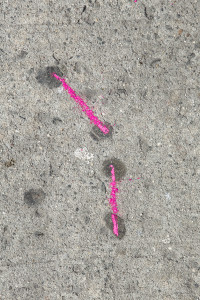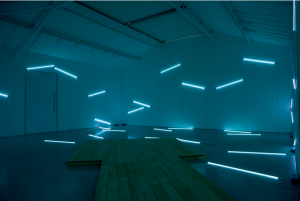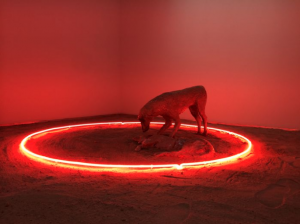“It looks childish, but it is not childish… one can see how much I love human beings, in my art I stand near them, when the power of fate and oppressive structures beset them” – Fateh Moudarres

There is a rare intimacy to works on paper. If painting or sculpture is a scene or concept held still under the artist’s gaze, perfected, poeticised, and objectified, works on paper become an urgent dashing down of a moment to retain its life and energy.
This energy is fervent in Green Art Gallery’s most recent exhibition, where more than 50 drawings and sketches by Arab masters are displayed together, cluttered on the walls, depicting new takes on mythic and real scenes to provide a new perspective on life in the Middle East since mid-century. There is immediacy to the intimacy – works that were, perhaps, never intended to be collected and displayed in this way are inherently revelatory and raw, an honest telescope through which we encounter the artists and their milieu.
The works share a medium and expressionistic similarity – these are all ‘Hikayat’ – a term most traditionally applied to anonymous short stories of prose or poetry. Though many of the pieces are by celebrated Arab masters, the transposition of the term indicates a kind of anonymity to the act of drawing. In the most fundamental sense this is the anonymity of the artist’s style, which perhaps would be more evident in their known painting and sculptural hand – the brushstrokes, the characteristically expressionistic line or the delicate colour, betraying their identity.
Anonymity also implies the sense of inhibition facilitated by drawing, where what is put down can be changed relatively easily and where a lack of preciousness provides a looseness of style that makes the medium, and this collection, so exciting.

Green Art Gallery – Hikayat, Installation View
The exhibition captures multiple iterations of narrative urgency, offering a ‘glimpse of drawing’s potential to make cultural, social and political proposals’ a celebration of a medium which ‘lends itself readily to the theoretical and the experimental’ and their exposition of the works in the literature accompanying the exhibition provides a fascinating alternative view on half a century of Arab art, culture and politics.

Fateh Moudarres, Untitled, 1981, Watercolour on paper, 29.5 x 38.5 cm
Fateh Moudarres‘ representational language was engaged with mythology, religion and popular lore as well as a deep political engagement. An accomplished writer and poet, his “dessins” were also featured in several of his published short stories.

Elias Zayat, The Rider, 1967, Ink and watercolor on paper, 63 x 43 cm
Known for his dramatic portraiture of mankind, Syrian artist Elias Zayat’s practice has been thoroughly engaged with the visual legacy of mythology, ancient civilizations and religions in the region. Figures intertwine, almost floating, while recurring images of faces, some classical, others saintly and yet others tortured, recall Zayat’s other endeavor – conservationist and restorer of orthodox icons.

Jamil Molaeb, Untitled, c. 1992, Gouache on carton, 50 x 70 cm
Lebanese artist Jamil Molaeb’s works, tell the story of traditional rural life, inspired by the landscapes he saw in the mountains of Lebanon these situational sceneries drawn from the life around him depict different Arab communities, the villages, cities and fields.
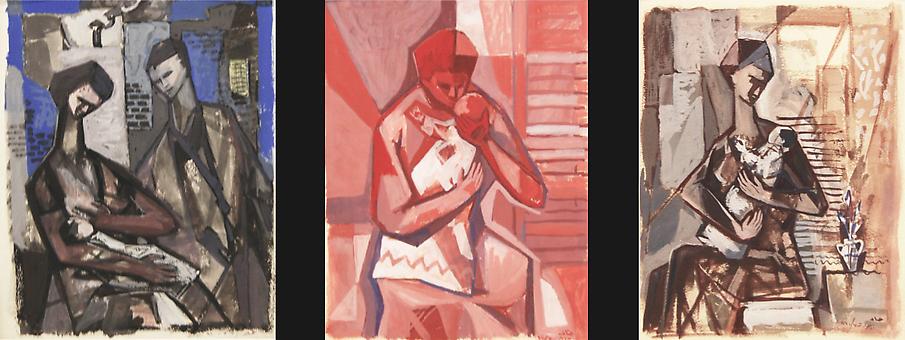
Mahmoud Hammad, The Family, 1960, Gouache on paper, 22 x 17 cm
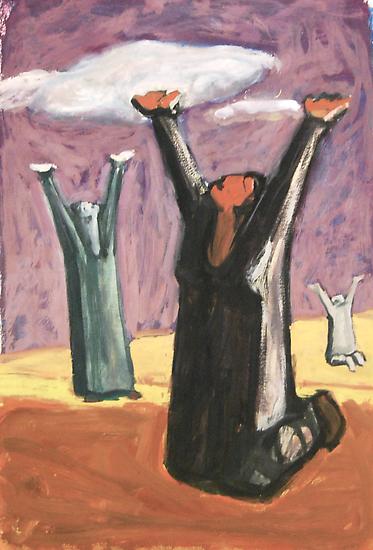
Mahmoud Hammad, Thirst, 1960, Acrylic on paper, 50 x 34 cm
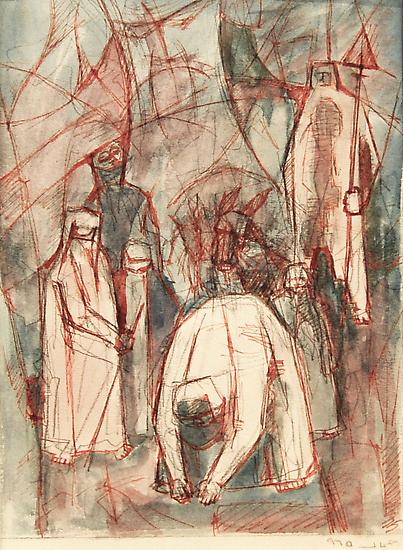
Mahmoud Hammad, The Harvest, 1965, Watercolor on paper, 22 x 16 cm
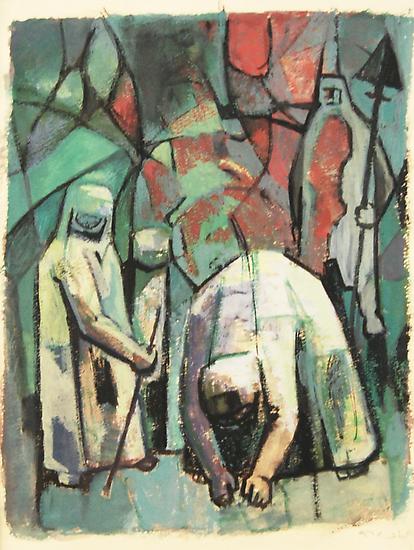
Mahmoud Hammad, The Harvest, 1965, Gouache on paper, 24 x 18 cm
Syrian master Mahmoud Hammad recounted rural Syrian life earlier in his career. Upon his return from Rome, he moved to Daraa where he lived for two years and started a series of paintings depicting the social scenes of the area of. During that period, Hammad’s central theme was the family and the role of the mother. He was also concerned with the political landscape, captured in February 1958, a work which evokes the union between Egypt and Syria with the metaphorical birth of the two nations’ child, or through his many allusions to the Palestinian cause in works like A Girl from Horan, Wounded and Exile. This exhibition presents Hammad’s works on paper from the Horan period, most of which became studies for much larger paintings, and many of which have never been shown to the public.
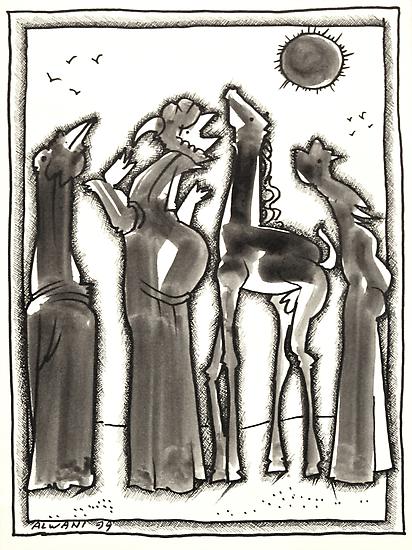
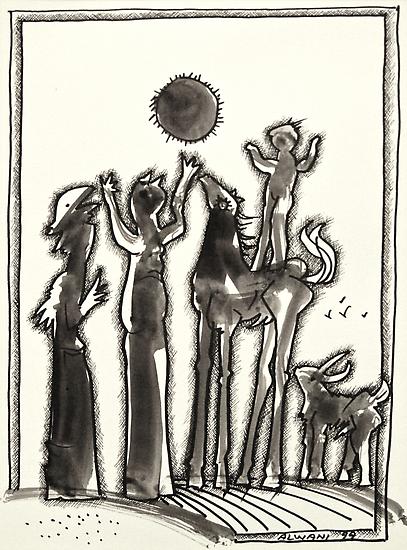
Khouzayma Alwani, Untitled, 1999, Ink on canson paper
Khouzayma Alwani’s delicate horrors are so exquisite they beguile the viewer into fascination with intricate imagery. Following the Hama Massacre of 1981, his work revolved around the world as a big dramatic theater of monsters and beasts, in a tacit allusion to the Syrian society in a state of devastation.

Aref El Rayess, Untitled, c. 1973, Ink on canson paper, 36 x 44.5 cm

Aref El Rayess, Untitled, c. 1973, Ink on canson paper, 37.5 x 38 cm
Aref El Rayess‘ series of drawings were produced in the early seventies and denounce the corruption he was witnessing within the political circles governing the Middle East, both after the Cairo accord in 1969 and the 1973 Arab Israeli war. For El Rayess, it is as if the leaders and politicians were gambling their populations’ destinies through manipulations and tacit agreements, hence jeopardising the ideals of the revolution his generation firmly believed in and fought for. The age of deceit has started, and the political scene in the Arab world seems like a big farce.
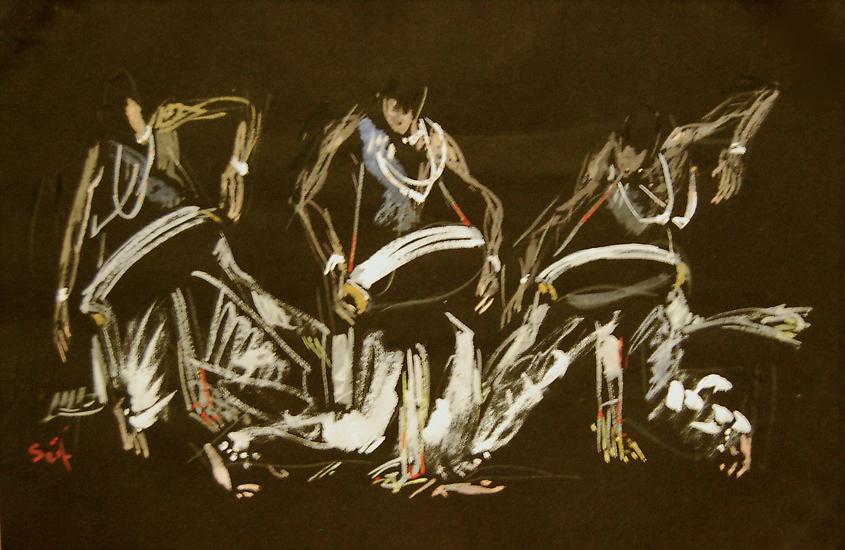 Seif Wanly, Untitled, c. 1953, Pastel on canson paper 30.5 x 47 cm
Seif Wanly, Untitled, c. 1953, Pastel on canson paper 30.5 x 47 cm
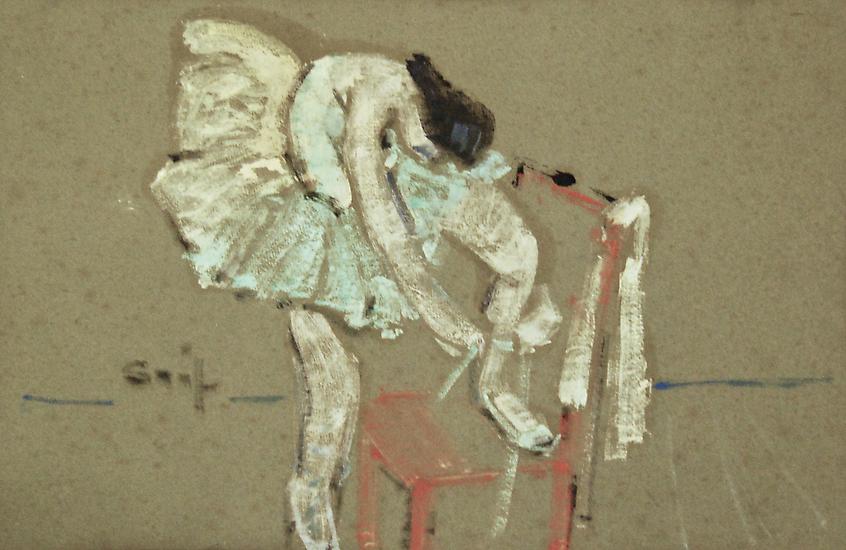
Seif Wanly, Untitled, c. 1953, Pastel on canson paper, 30.5 x47 cm
Egyptian artist Seif Wanly’s works capture the theatrical and the sublime, here several works on paper which portray society’s more esoteric dimensions, including medieval traditions, circus acrobats and ballet dancers.
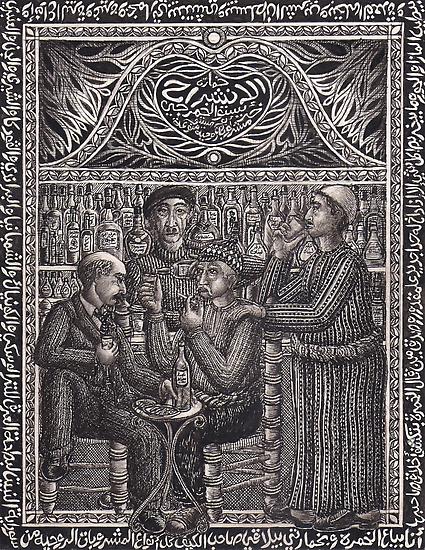
Khaldoun Shishakly, Shops and Vendors of the Past, Ink on paper, set of 100 works, each 26 x 21 cm
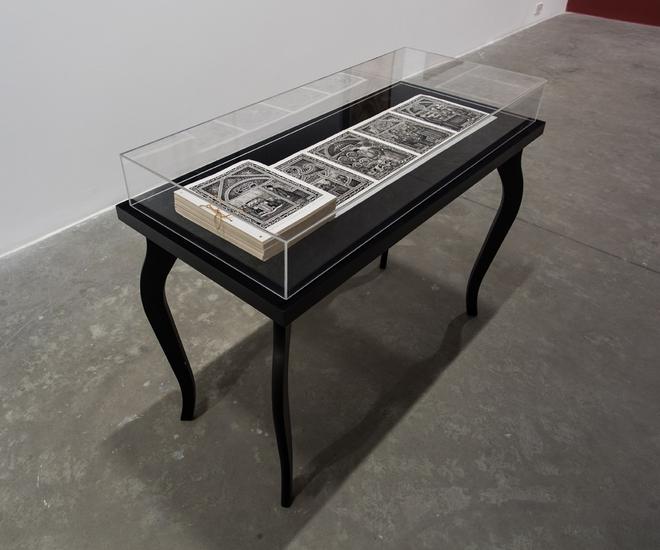
Khaldoun Shishakly, Shops and Vendors of the Past, Ink on paper, set of 100 works, each 26 x 21 cm, Installation View
Syrian artist, Khaldoun Sheishakly has spent his entire life drawing and documenting 500 Damascene professions in intricate detail. Shops and Vendors of the Past represents an important history of storytelling and life in Syria and summarises the artists’ needs to carve a cultural identity that reflected the groundbreaking social and political changes that were taking place at that time.
Hikayat is at Green Art Gallery until 26th October
